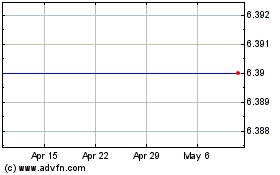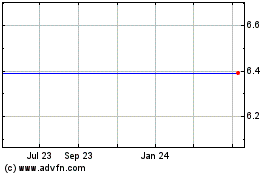For-Profit Schools Could See Bigger Hit From Student Debt Rule
August 16 2010 - 8:30AM
Dow Jones News
A number of for-profit colleges may be in more danger than first
believed of running afoul of a regulation proposed by the U.S.
Department of Education that would force on them harsh penalties
for graduating students with high debt loads, according to data the
agency released late Friday.
The Department, in an attempt to show some of the rule's
potential impact were it to be implemented, posted to its website
late Friday a listing of the fiscal 2009 loan repayment rates at
more than 8,000 for-profit schools nationwide.
The rule, intended to measure how well for-profit schools train
students for gainful employment in a recognized occupation,
proposes to measure that success by penalizing programs for
graduating students with heavy debt burdens. Schools could "pass"
based on student loan repayment rates, or by maintaining a
debt-to-income ratio below a certain percent.
A handful of schools have announced that, based on internal
calculations, most or all of their programs should pass the
government's proposed hurdles. However, the newly released data
"suggests ineligibility issues are meaningfully understated for
proprietary schools," FBR Capital Markets analyst Matt Snowling
wrote in a note Monday.
One element that makes Friday's data difficult to compare
directly to the proposed rule is that it measures loan repayment
rates on a school-wide basis, while the Department's recommendation
only measures program-wide repayment.
Still, some schools are assuming the worst from the Department's
numbers.
Strayer Education Inc. (STRA), which in late July said it
believed each of its programs would clear the Department's highest
proposed hurdle of loan repayment by 45% of graduates, scored a 25%
school-wide. The company had noted last month that it was difficult
to measure rates exactly because loan consolidation complicates the
measure of deferment or forbearance.
Strayer on Saturday afternoon issued a press release calling the
findings "significantly at odds with Strayer University's own
internal analysis," and scheduled a conference call with analysts
for early Monday.
"This discrepancy has significant operational, financial, and
public policy implications," Strayer said in the statement, calling
for a meeting with the Department to "de-conflict" the data. The
company said it will file a Freedom of Information Act request to
see some of the data on which the agency based its calculations,
calling the data "inaccurate," "nonsensical" and "arbitrary."
Strayer had been considered among the schools most shielded from
the proposed rule, with a large portion of its students in
bachelor's and graduate degree programs and historically low loan
default rates.
"The fact that [Strayer] had among the lowest repayment rates
among the publicly held group despite having relatively low cohort
default rates leads us to question the validity of this data
series," said Jeff Silber of BMO Capital Markets.
Based on Friday's data, Universal Technical Institute Inc.
(UTI), Grand Canyon Education Inc. (LOPE), American Public
Education Inc. (APEI) and Bridgepoint Education Inc. (BPI) had the
highest repayment rates among publicly traded for-profit schools,
all above the 45% threshold. Corinthian Colleges Inc. (COCO),
Washington Post Co.'s (WPO) Kaplan and ITT Educational Services
Inc. (ESI) were among the lowest.
Shares of Corinthian were trading down 12% to $5.86 premarket.
Corinthian has lost more than half its market value so far this
year.
-By Melissa Korn, Dow Jones Newswires; 212-416-2271;
melissa.korn@dowjones.com
Bridgepoint Education, Inc. (NYSE:BPI)
Historical Stock Chart
From Oct 2024 to Nov 2024

Bridgepoint Education, Inc. (NYSE:BPI)
Historical Stock Chart
From Nov 2023 to Nov 2024
